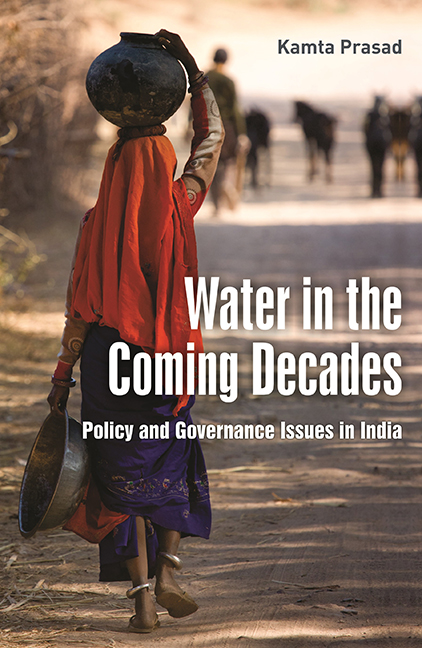Book contents
- Frontmatter
- Dedication
- Contents
- List of Tables
- List of Abbreviations
- Preface
- Acknowledgements
- Section I Overall Perspectives
- Section II Situational Analysis
- Section III Socio-economic, Institutional and Environmental Aspects
- Section IV Technological Options
- Section V Concluding Observations
- References
- Index
21 - Controversy about Dams and the Way Out
Published online by Cambridge University Press: 13 July 2022
- Frontmatter
- Dedication
- Contents
- List of Tables
- List of Abbreviations
- Preface
- Acknowledgements
- Section I Overall Perspectives
- Section II Situational Analysis
- Section III Socio-economic, Institutional and Environmental Aspects
- Section IV Technological Options
- Section V Concluding Observations
- References
- Index
Summary
Recent years in India have witnessed great controversy regarding the usefulness of large dams. The issues involved in this controversy are analysed in this chapter. It highlights the nature of the controversy, examines how important is the dam option for India and indicates a road map for the future.
Introduction
Dams have a long history in India. Dams constructed in ancient or medieval India were, however, small or medium in size. But, with the advancement of technology in the modern age, large dams came to be constructed in India as in other countries. India gave a pride of place to them in the strategy of its development formulated after independence. As a result, the pace of dam building increased since 1951 and especially since 1961. Only 64 dams existed before 1900. Maximum number of large dams, i.e. 1,280 and 1,243 were constructed, respectively, during the two decades of seventies and eighties. These constituted more than 50 per cent of the large dams constructed so far. The number declined to 605 in the next decade followed by a further decline to 286 in the subsequent years from 2001 and beyond. The total number of large dams including those under construction is reported to be 5,101 by 2010. Of these, 906 are in Madhya Pradesh, 821 in Maharashtra, 666 in Gujarat, 334 in Andhra Pradesh, 259 in Chhatisgarh, 236 in Karnataka and Rajasthan, while the remaining 1,676 are in other parts of the country. The live storage capacity, which was only 15.6 BCM at the time of independence increased to 225 BCM by 2009. Projects under construction are likely to add 64 BCM and those under consideration are estimated to be 108 BCM. Consequently, India has become a major country having large dams. But, as generally happens with any new technology, certain side effects escaped the attention of planners in the beginning. Gradually, these led to controversy. In many cases and, especially with respect to the Sardar Sarovar and Tehri Dams, agitations were also launched. These agitations attracted considerable media attention, not only in India but also abroad. As a result, a sizeable anti-dam lobby emerged in India as well as in several other countries by the beginning of the nineties of the last century and has continued to exist since then.
- Type
- Chapter
- Information
- Publisher: Foundation BooksPrint publication year: 2014

